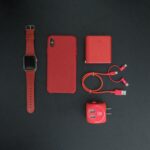It’s time to get your lab on. Cell counting is one of the most common tasks in a cell biology lab, and it can be done with relative ease using our cell counting kit 8 kits! This kit contains everything you need to count cells.
Cell Counting Kit 8 ( CCK8) provides a convenient and robust way of performing a cell viability assay. The kit uses a water-soluble tetrazolium salt to quantify the number of live cells by producing an orange formazan dye upon bio-reduction in the presence of an electron carrier. This is done through colorimetric analysis using a microplate reader at 450nm wavelength. It’s easy to use, affordable, and gives accurate results every time!
Cell Counting Kit-8 is a one-bottle solution; no premixture is required. This kit colorimetrically determines the number of viable cells in cell proliferation cytotoxicity assays. WST-8, when incubated with dehydrogenase, gives an orange product (formazan) that is soluble in a tissue culture medium. The quantity of formazan dye produced by dehydrogenases in cells is directly proportionate to their number. The proliferation of cells employing CCK-8 corresponds well with the incorporation of [(3)H]thymidine. Additionally, the CCK-8 test can be used in place of the [(3)H]thymidine incorporation assay. CCK-8 has greater sensitivity for detection than other tetrazolium salts such as MTT, XTT, MTS, or WST-1.
You can perform your assays with ease thanks to this simple protocol that requires minimal hands-on time while delivering accurate results. With just one step, you will be able to determine if your cells are alive or dead within minutes instead of hours! Get started today with our kits so you can see how great they are!
Cell Counting Kit 8 Protocols
Cell Number Determination
- In a 96-well plate, inoculate cell suspension (100L/well). Incubate the plate in a humidified incubator (e.g., 37°C, 5% CO2) before use.
- Each well of the plate should be filled with 10L of the CCK-8 solution. Avoid introducing bubbles into the wells, since they will interfere with the O.D. reading.
- Incubate the plate in the incubator for 1-4 hours.
- Utilize a microplate reader to determine the absorbance at 450 nm. To determine the absorbance later, add 10L of 1% w/v SDS or 0.1M HCl to each well, cover the plate, and keep it at room temperature away from direct light. For 24 hours, no change in absorbance should be noticed.
Cell proliferation and Cytotoxicity Assay
- In a 96-well plate, dispense 100L of cell suspension (5000 cells/well). Pre-incubate the plate in a humidified incubator for 24 hours (e.g., 37°C, 5% CO2).
- To the plate, add 10L of varying concentrations of the compounds to be tested.
- Incubate the plate in the incubator for the specified incubation period (e.g., 6, 12, 24, or 48 hours).
- Fill each well of the plate with a 10L CCK-8 solution. Avoid injecting bubbles into the wells, since they will affect the O.D. reading.
- Incubate the plate in the incubator for 1-4 hours.
- Use a microplate reader to determine the absorbance at 450 nm. To determine the absorbance later, add 10L of 1% w/v SDS or 0.1M HCl to each well, cover the plate, and keep it at room temperature away from direct light. For 24 hours, no change in absorbance should be noticed.





